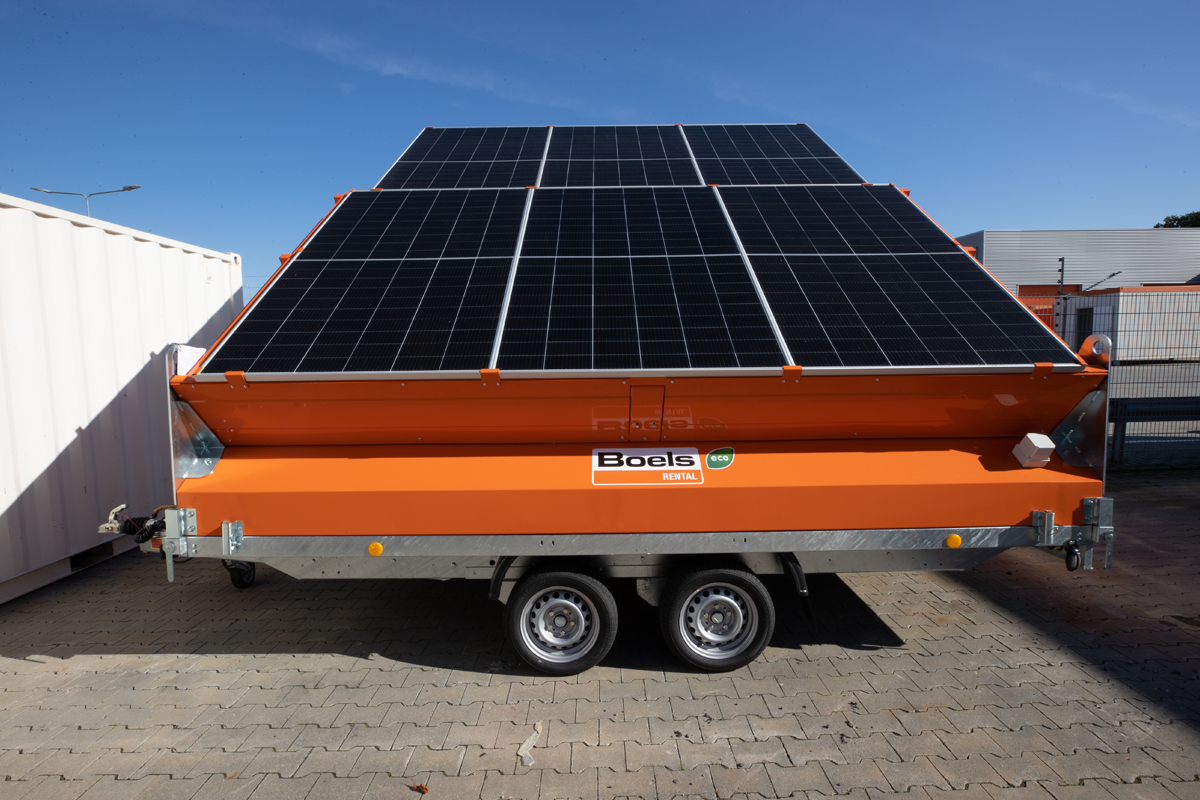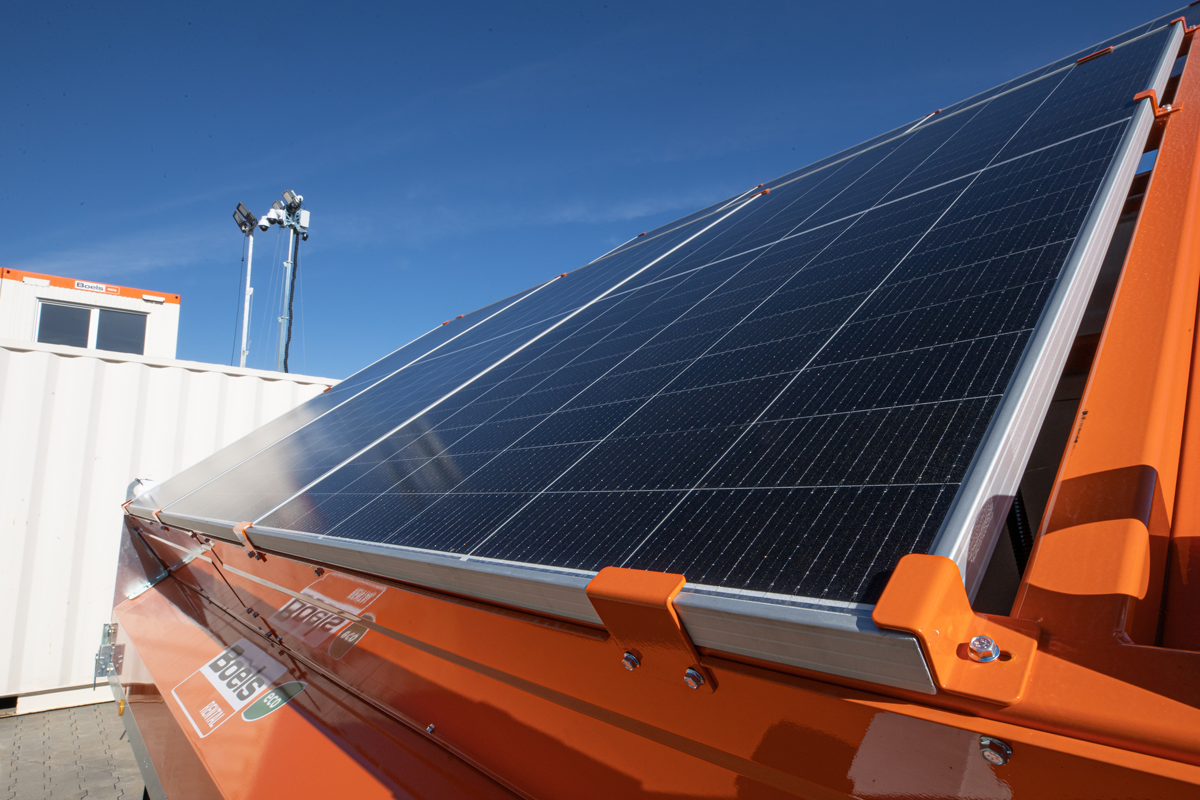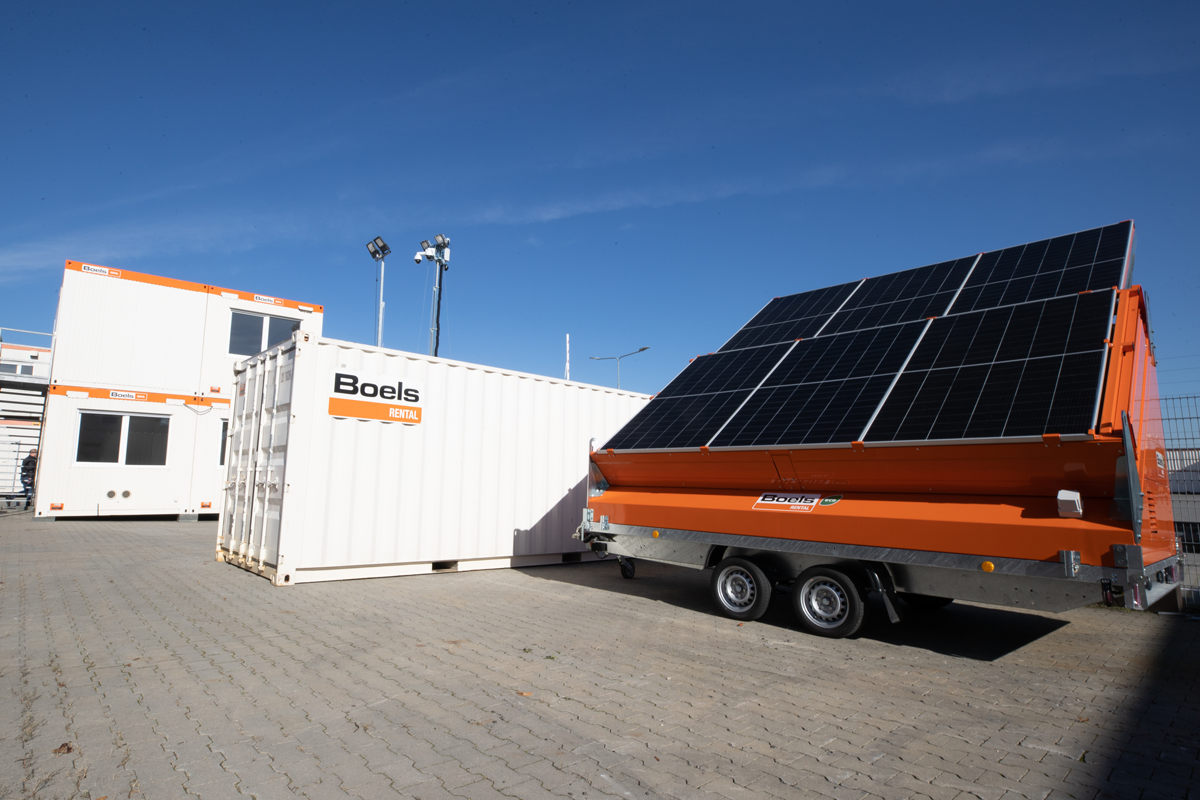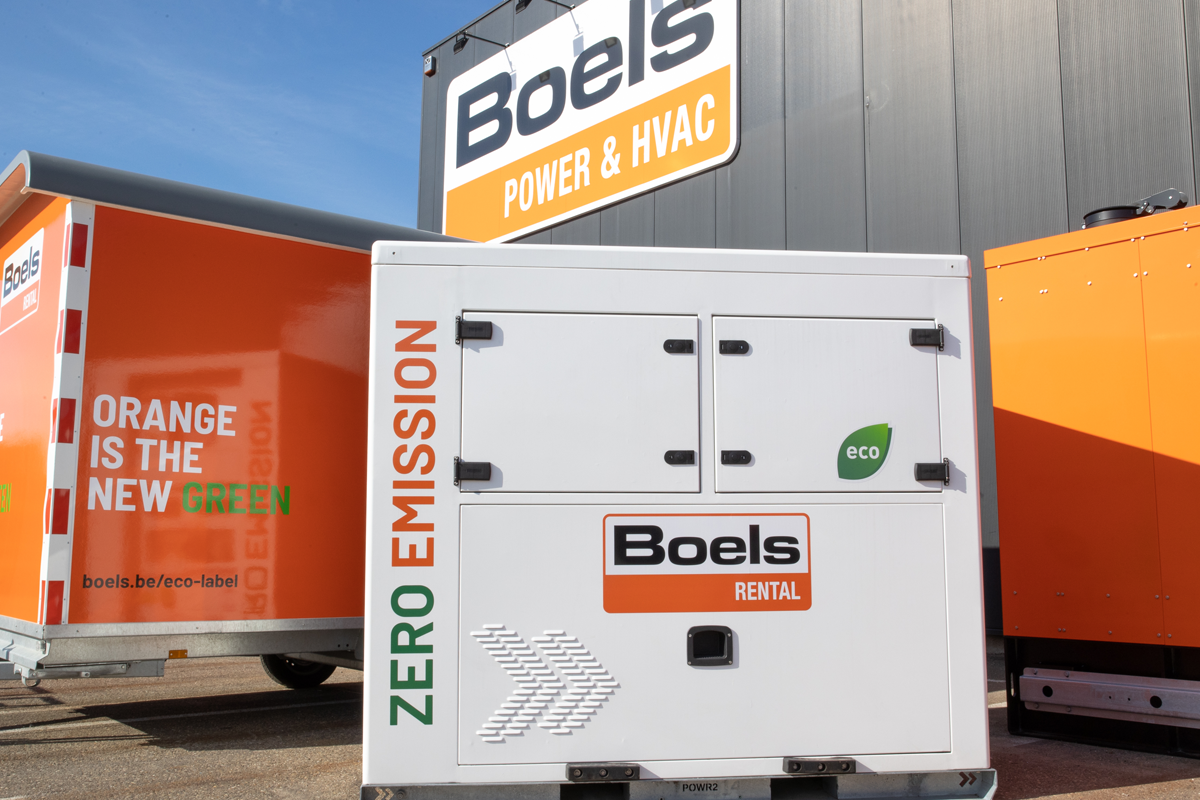Reading time: 5 minutes
The Dutch nitrogen crisis is putting construction projects in jeopardy. One thing is certain, clients and the government increasingly want development projects to be emission-free. And that means a growing demand for electric equipment. But there is another crisis that is throwing a spanner in the works: ‘congestion’ on our power grid. What is this exactly and what solutions does Boels have in store to guarantee your project keeps moving ahead without delay?
Construction and civil engineering companies are under enormous pressure to reduce the emissions of nitrogen and other harmful substances. Electrified equipment is, in many cases, the only logical solution. But charging all those machines requires (a lot of) power, which isn’t always ‘ripe for the picking’ from the power grid. How do you overcome this? Keep reading for ‘smart’ answers to your energy challenges.
The construction sector has the huge task to make its industry more sustainable. But what are the options you can choose from? The easiest way to become more sustainable is to use electric or battery-powered machinery. Other sustainable solutions include Stage V machines in combination with sustainable fuels, such as HVO (biodiesel). This not only brings carbon emissions down by as much as 90%, but also greatly reduces harmful emissions such as particulates, NOx, soot and sulphur.
Power grid congestion
Our electricity grid is overloaded and, just like the road network, can suffer from ‘traffic jams’. We call this phenomenon congestion. Congestion arises when the need to move electricity (the transmission capacity) is more than what the network can handle. When this occurs, only a limited amount of electricity can be taken or supplied back. An additional problem is that some regions already have only limited power supply. The demand for power is greater than the power grid can supply. In those cases, contractors simply aren’t able to get a construction connection
Temporary power supply
On top of the higher demand for electrically powered equipment, we are also noticing that it’s becoming more difficult for our customers to recharge their machines. Due to the shortfalls of the electricity network, construction companies often can’t get a power connection, or the connection they do have is too weak. Boels helps overcome this dilemma with several (intermediate) solutions to keep your electric (battery-powered) machines charged and ensure your projects keep running smoothly and on schedule.
Battery packs and solar panels
For smaller power requirements, portable battery packs are ideal. The capacity of these battery packs can easily be expanded by adding expansion packs on top of them. They are also used in sustainable site cabins, where they are charged by solar panels installed on the site cabin’s roof. A very convenient and efficient solution. At sites where more power is needed, 6x3m solar panel frames can be used. These frames are installed on top of one or a complete chain of units, so that they combine with the large battery packs (90 or 130 kWh) to supply their own power.
Solar generators
Recently, Boels proudly introduced a series of new ‘smart’ products. One is the mobile hybrid 20kVA solar generator. This machine can be transported on a trailer behind a van and has a built-in lithium battery with an impressive power capacity of 30kWh. The battery is charged by 6 powerful solar panels that can deliver a maximum output of 3630Wp. But what if the power demand gets too high, the battery power drops below a certain level, or there is no sun? Then the built-in 20kVA HVO (biodiesel) generator kicks in. This solar generator set is the perfect power supply at any location where a 10 to 40 kVA generator is idling away on site. Apart from reducing harmful emissions, you’ll also benefit from fuel savings which will ultimately make your project cheaper.
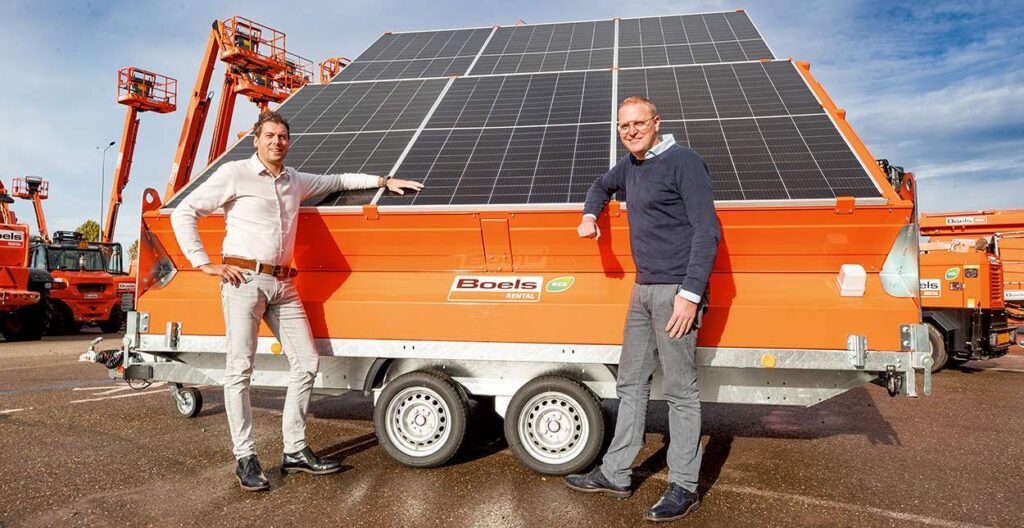
Harm Munsters – Manager Fleet & Maintenance & Michael Limpens – Manager Fleet NL
Stage V generators
Are your power needs so great that solar panels are unable to provide a solution? Then you can opt for Stage V generators. These generators have the ability to operate as stand-alone units or in a hybrid set-up. In the latter case, the generator is coupled to large battery packs. The hybrid set-up still enables you to save fuel because it runs at a much lower load and for a shorter time.
Load balancer
And, finally, is your project site equipped with one 32A power connection and do you need to charge several machines at once? Then you might want to consider a load balancer. It can handle up to nine 230V machines at the same time, so your project can always keep moving.
We are the partner you can rely on, we know exactly what you need and offer one-stop rental solutions for all your (electrical) equipment needs.

